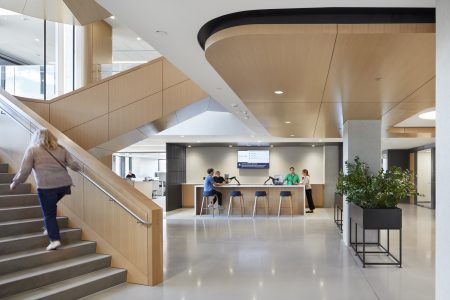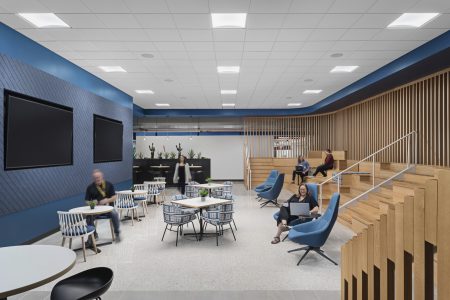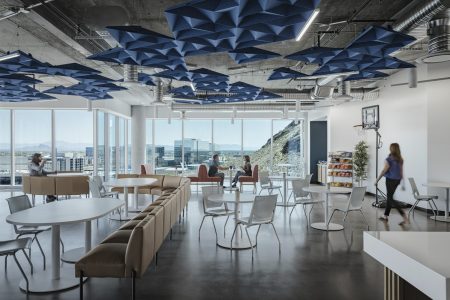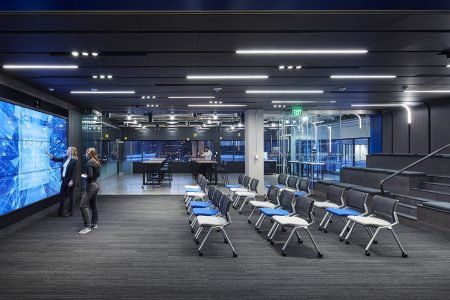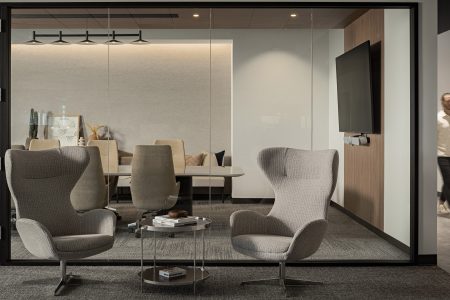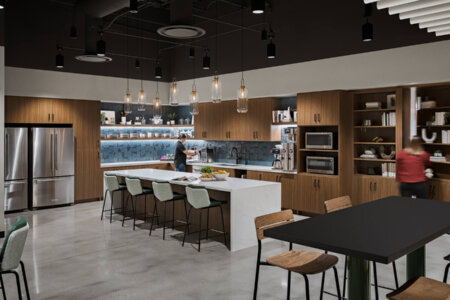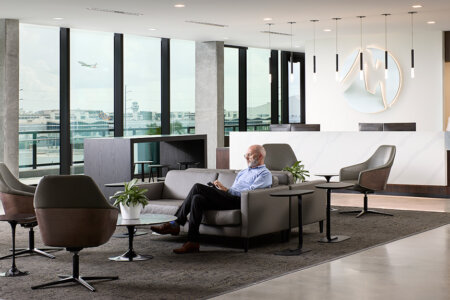Elevating the Office Experience: Culinary Delights and Collaboration Hubs
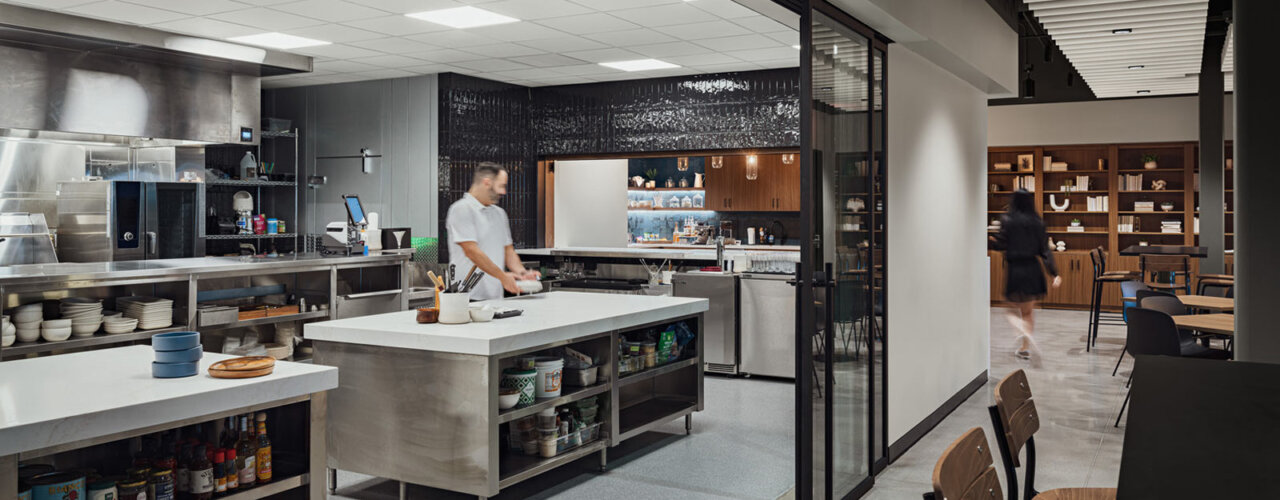
RSP’s Alissa Franconi NCIDQ, IIDA shares her observations and expertise on incorporating food perks and collaboration hubs in some of the most successful organizations.
This article was originally published in Work Design Magazine, September 2024.
Across the country and across industries, companies are turning their offices into dynamic culinary and collaborative hubs. By blending gourmet food options with cutting-edge office layouts, they’re not just filling stomachs—they’re boosting morale, sparking creativity, and enhancing productivity. It’s all part of a bigger movement toward creating workspaces that truly nurture and inspire employees, making the workplace experience more enjoyable and fulfilling.
The Rise of Food-Centric Workplaces
A 2024 study conducted by the University of Minnesota showed a powerful connection between shared meals and positive mental health outcomes, including a reduction in depression symptoms and improved mood. This is the science to back up what we already knew through experience—when organizations invest in the perks, programs and design layouts that encourage employees to eat together, it can have a profound impact on productivity and happiness at work, as well as home.
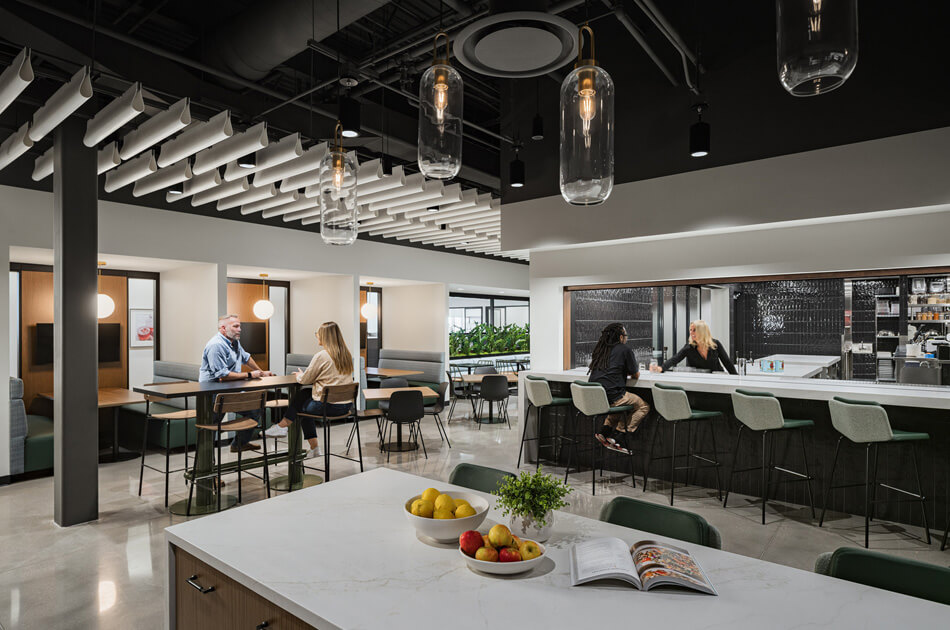
At the True Food Kitchen (TFK) national headquarters in Scottsdale, the emphasis on culinary experiences is a core aspect of the office culture. By way of introduction, True Food Kitchen owns and operates more than 45 restaurants across the country. They have been a leader of the “Real Food” movement, believing that great-tasting and nutritious food can serve as a foundation for a life well lived. And, as it happens, for a workplace teeming with engaged employees.
RSP’s design includes a test kitchen that mirrors the setup of their restaurants, allowing chefs to experiment with new recipes and host local events. This not only serves as a practical space for culinary innovation but also as a unique workplace perk that enhances the daily work experience for employees. As part of phase two, the office will feature a speakeasy adjacent to the breakroom, offering a secluded and stylish space for relaxation and informal meetings. This blend of work and leisure spaces reflects a broader trend of creating versatile environments that cater to both professional and personal needs.
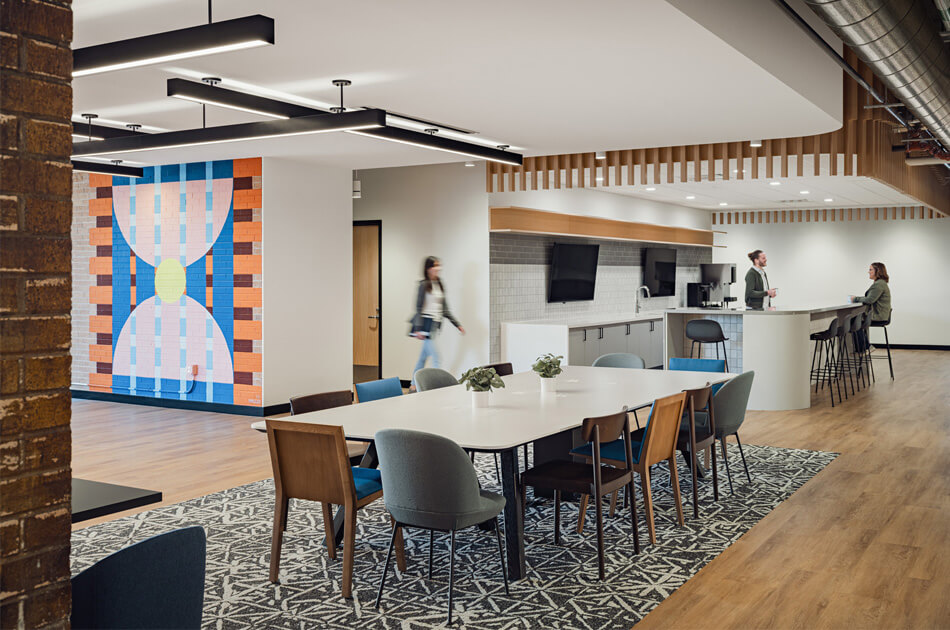
Of course, this creative approach seems logical, if not expected, for a food and beverage leader like TFK, but we’re starting to see more traditional corporations embrace new ways to elevate the office experience.
Collaboration Hubs: The New Office Paradigm
In addition to culinary perks, many modern offices are adopting the “collaboration hub” layout, which focuses on creating dynamic spaces that facilitate interaction and teamwork. This model typically includes unassigned workstations, flexible meeting areas, large format meetings spaces that are multifunctional and communal or pre-function spaces, designed to encourage spontaneous collaboration and socialization.
At one recent project, a credit union headquarters, the lobby plays down the traditional reception component instead focusing on the coffee bar and seating areas, encouraging use and connection between employees throughout the day. Such environments are particularly effective in fostering a sense of community and boosting creativity, as they provide employees with various settings for different types of work and interaction. This approach also tries to “bake in” spaces and experiences that encourage impromptu meetings and chance encounters among colleagues—always the spark of collaboration.
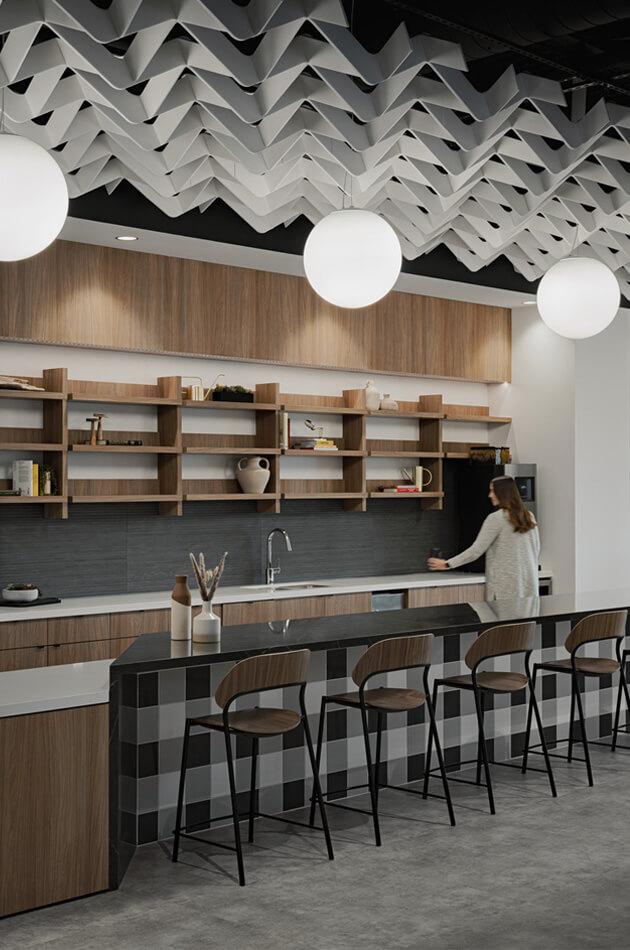
The TFK headquarters embodies this approach with its open office design and multipurpose areas like the test kitchen and speakeasy. These spaces not only support culinary activities but also serve as informal meeting points where employees can gather, share ideas, and build relationships. The presence of these collaborative spaces is aligned with findings from various studies, including our own research and data-driven design strategies for large national clients with complex real estate portfolios.
Creating Community Through Food and Design
F&B amenities and collaborative layouts do more than just provide sustenance and space to work; they foster a sense of community, encourage interaction among employees and simply get the conversation going.
Implementing these amenities and layouts involves challenges, such as managing food safety and designing flexible spaces that balance openness with privacy. However, the benefits, including increased engagement and productivity, make these efforts worthwhile. As highlighted by the Harvard Business School research, companies that invest in their employees’ well-being, including through food offerings, see significant gains in engagement and productivity.
The trend of enhancing workplace environments with quality F&B amenities and collaboration hub layouts is reshaping how companies design and use office spaces. By providing culinary benefits and dynamic, flexible workspaces, companies like TFK and others are creating environments that not only attract top talent but also promote a sense of community, well-being, and productivity among employees.
Featured Image: True Food Kitchen Headquarters, Scottsdale, AZ | Photographer Credit: Jason Roehner



